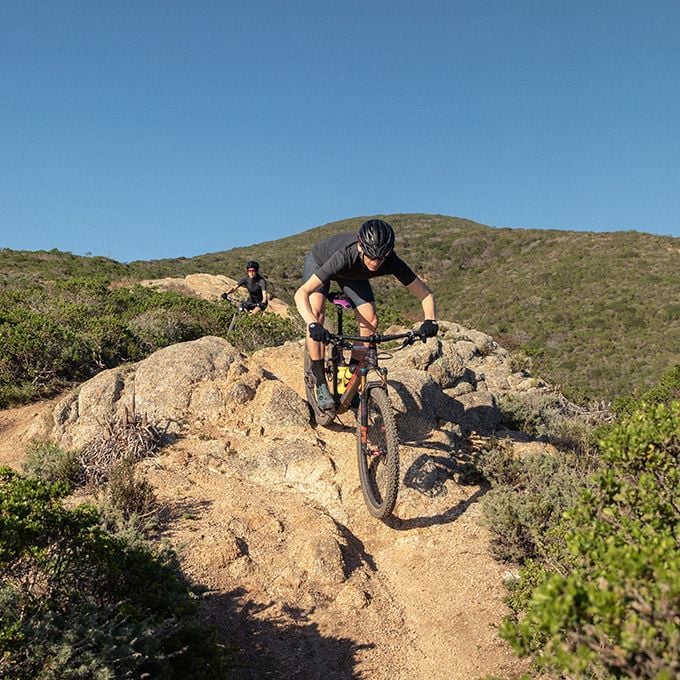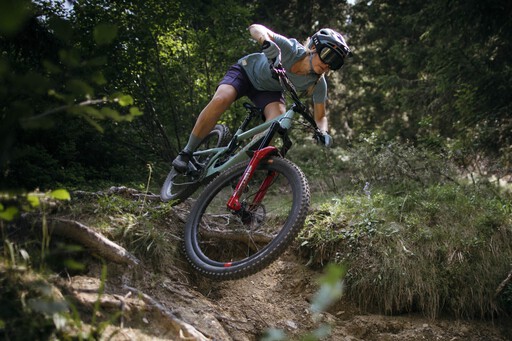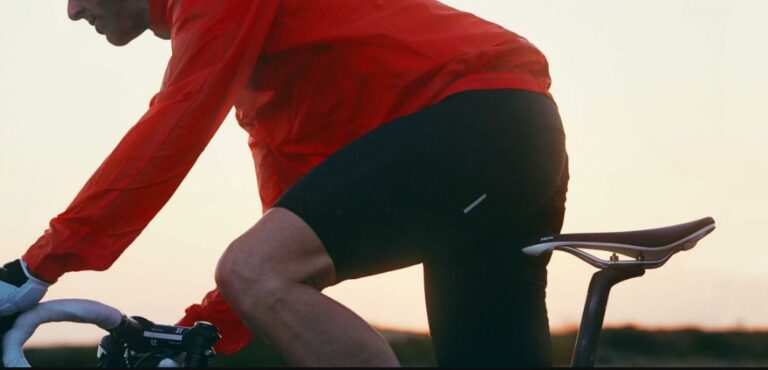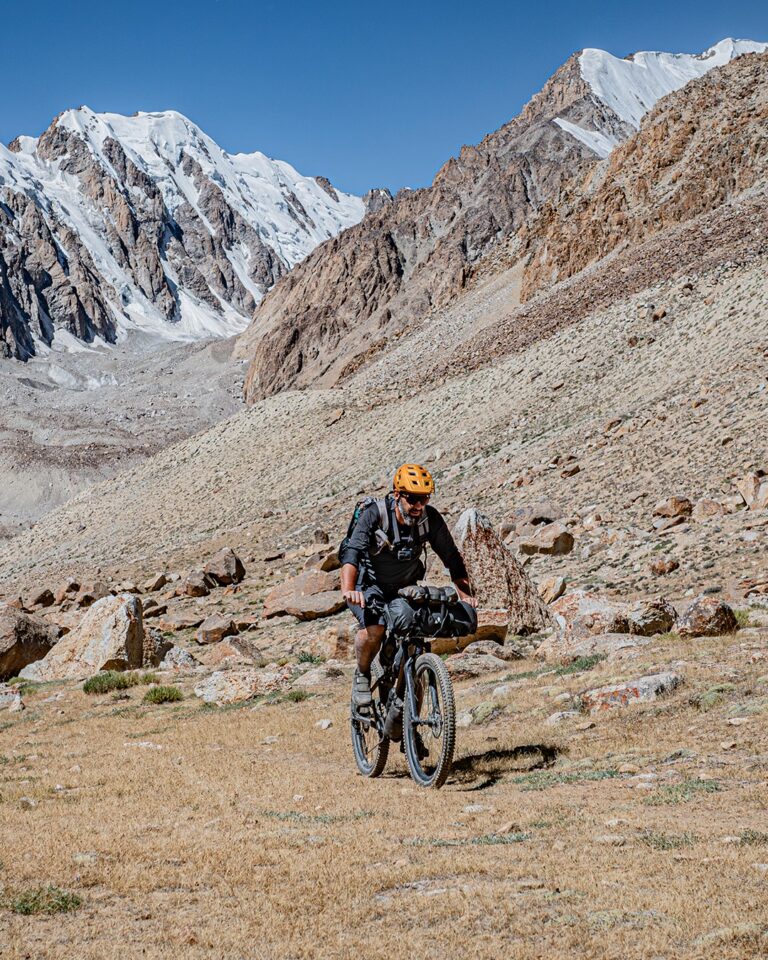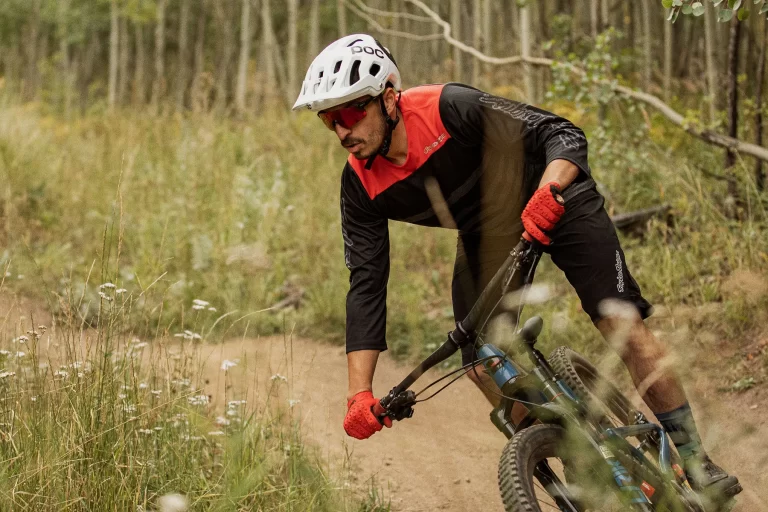How to Choose a Gravel Bike Saddle
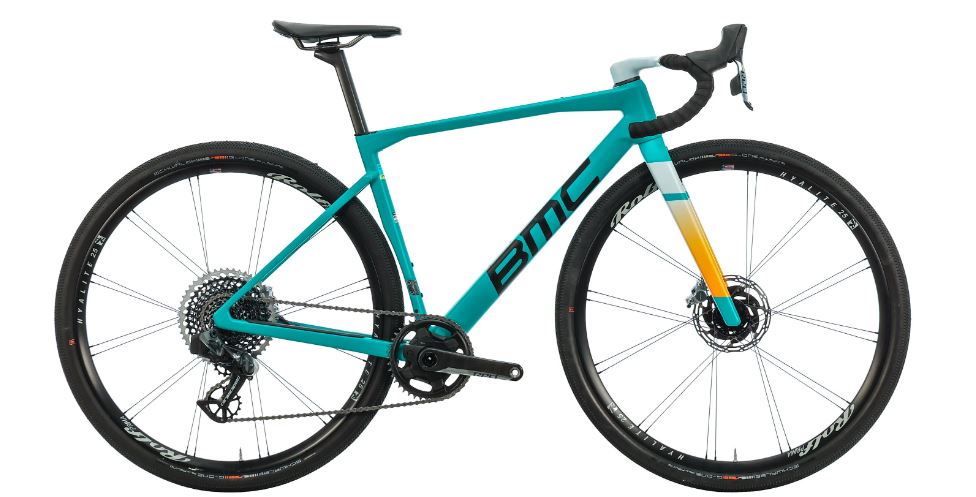
Choosing the Right Gravel Bike Saddle: A Comprehensive Guide
Gravel biking is an exciting way to experience the thrill of cycling. Unlike regular road cycling, gravel biking exposes you to various terrains, from smooth roads to rugged trails. The diverse terrain can significantly impact your riding comfort, especially if your saddle isn’t right. Selecting the perfect gravel bike saddle is crucial for an enjoyable and pain-free ride. Here’s how to choose a gravel bike saddle.
Understanding Your Riding Style:
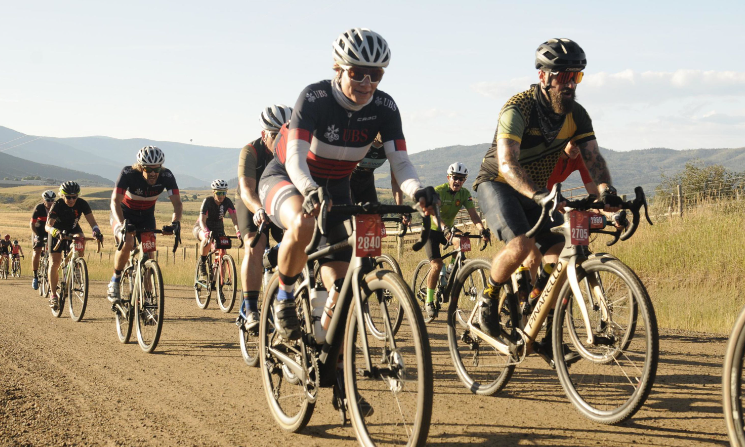
Every cyclist has a unique riding style. The kind of riding you predominantly engage in will significantly influence the type of saddle you need.
- Casual Riding: Occasional riders or those who venture out for short distances can prioritize comfort. A wider saddle with plush cushioning will suit such riders, offering a relaxed riding experience without exerting undue pressure on any part of the body.
- Long-distance/Endurance: Riding for extended periods demands a saddle that’s ergonomically designed, with balanced cushioning to avoid numbing or sore spots. A streamlined shape allows easy movement, ensuring you can adjust your position without any hindrance.
Importance of Sit Bone Width:

Arguably, one of the most overlooked aspects when choosing a saddle is the sit bone width. Your sit bones (ischial tuberosities) are the primary points of contact and weight distribution on the saddle. A saddle too narrow will leave your sit bones hanging off the sides, causing discomfort. In contrast, a saddle too wide can lead to chafing.
Many specialized bike shops have measuring tools or gel pads where you sit, leaving an impression of your sit bones. The distance between these impressions gives an accurate measurement of your sit bone width. When selecting a saddle, always ensure it’s at least 20mm wider than your sit bone measurement.
Deciphering Saddle Shape:

Different saddle shapes cater to different rider needs.
- Flat: Flat saddles cater to riders who prefer a dynamic riding style. If you find yourself moving and adjusting frequently, especially on changing terrains, a flat saddle might be your best bet.
- Rounded: Contrary to flat saddles, rounded ones are for riders who remain relatively static in their position. These saddles support the natural curve of the buttocks.
- Cut-out or Groove: These designs have gained popularity in recent years. The central cut-out or groove is not just aesthetic; it plays a vital role in reducing pressure on the perineal area, preventing numbness or discomfort, especially during long rides.
Delving into Padding:

- Gel: Perfect for those looking for instant comfort. Gel padding molds to your body shape, providing personalized support. However, they tend to be a tad heavier and might not be ideal for competitive riding.
- Foam: Foam saddles strike a balance. They offer the necessary cushioning while retaining their shape even on extended rides. The density varies, with some foams being harder and others softer, catering to different preferences.
Material Matters:
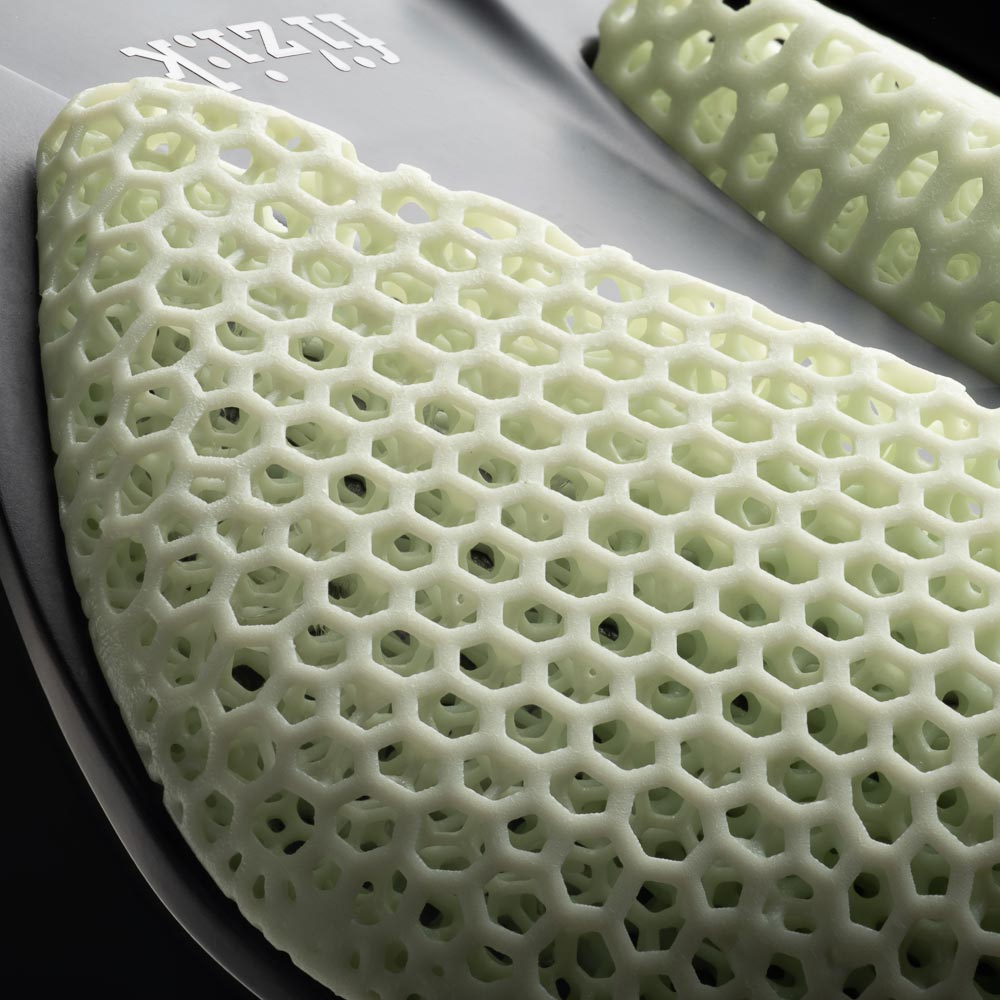
Every component of the saddle, from its cover to its rails, plays a crucial role in determining its performance, durability, and comfort.
- Cover: Synthetic covers like microfiber or Lorica are both durable and weather-resistant. They can withstand the rigors of gravel biking without showing signs of wear. Traditionalists might opt for leather, which, while offering unmatched comfort and a unique patina over time, demands regular care to prevent drying or cracking.
- Shell: The shell forms the saddle’s base. Plastic shells are standard, offering flexibility and durability. For those looking to shave off grams from their bikes or seeking more flexibility, carbon fiber shells are ideal, albeit at a higher price point.
- Rails: Connecting the saddle to your bike are the rails. Steel rails are sturdy and affordable. Titanium offers a lighter alternative with some shock-absorbing properties, while carbon rails are for the weight-conscious, providing strength without adding heft.
Nose Length:
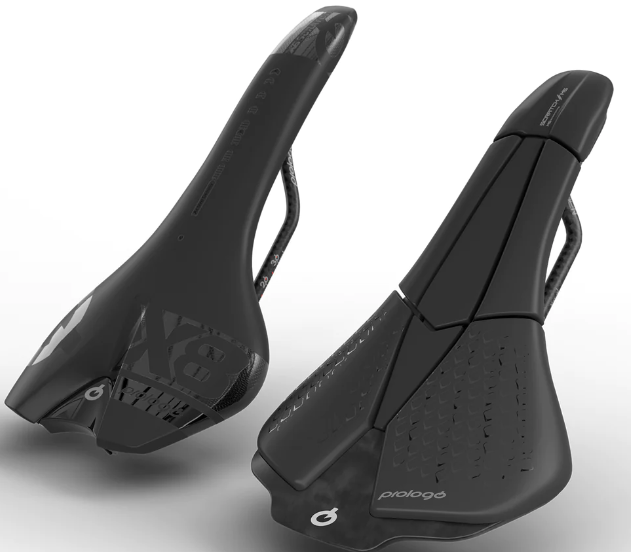
The saddle’s nose can influence how you control your bike, especially on challenging terrains.
- Short-nosed saddles: These have found favor with aggressive riders. They reduce the chances of chafing during intense pedaling sessions and can help in maintaining an aggressive posture.
- Traditional long-nose: Offering more real estate, these allow riders to shift their weight forward during steep climbs or when trying to gain more control.
Flexibility and Pelvic Rotation:
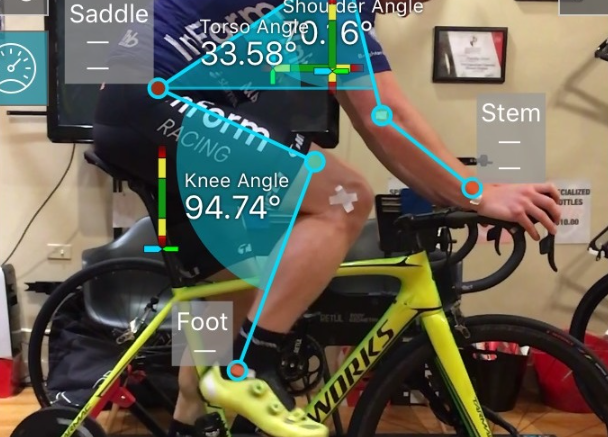
Your body’s flexibility plays a significant role in determining saddle comfort. Highly flexible riders, or those with an anterior pelvic tilt, might prefer a saddle that slopes slightly downwards towards the nose. In contrast, riders with less flexibility or a neutral pelvis might find a flat saddle or one with a slight upward tilt more comfortable.
The “Try Before You Buy” Mantra:
Saddle comfort is highly subjective. It’s always advisable to test-ride a few options before settling. Many bike shops offer demo saddles or have a generous return policy, ensuring you don’t end up with a saddle that looked promising but didn’t live up to the expectations.
Gender-Specific Designs:
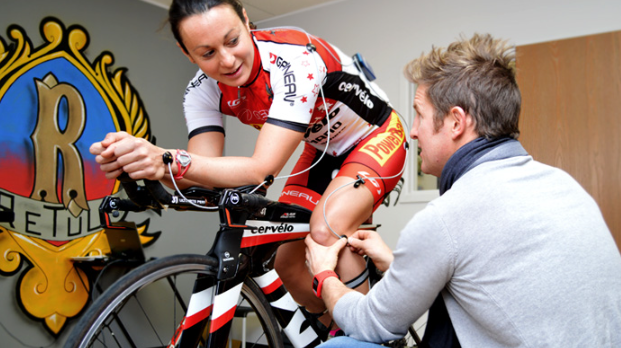
While it’s essential not to generalize, women-specific saddles consider the average wider sit bone distance in women. They may also incorporate different profiles for enhanced comfort.
Trust but Verify:
In the age of information, it would be unwise not to check online reviews and recommendations. While personal comfort is subjective, collective experiences can provide insights into a saddle’s durability, suitability for specific terrains, and overall performance.
The Art of Saddle Adjustment:

Investing in a premium saddle will be in vain if it’s not adjusted correctly. Ensuring the right tilt, height, and fore/aft position is crucial for maximizing comfort and pedaling efficiency.
Caring for Your Saddle:

Your saddle is exposed to sweat, dirt, and the elements. Regular cleaning, especially for leather saddles, will ensure it remains in pristine condition for years.
In conclusion, selecting the right gravel bike saddle requires careful consideration of multiple factors. It’s a blend of understanding your body, riding style, and the terrains you frequent. A well-chosen saddle can elevate your gravel biking experience, ensuring every ride is a journey of joy.
John
Useful Links
How to fit a women’s bike saddle
FAQ’s
Why are gravel saddles wider?
Gravel saddles are typically wider in design for a combination of anatomical, ergonomic, and riding reasons, which stem from the nature of gravel biking itself. Let’s delve into why this is the case:
- Varied Terrain and Stability: Gravel riding often involves varied terrains, from smooth roads to rugged trails. This unpredictability requires riders to have a more upright and stable position than, say, aggressive road cycling postures. A wider saddle provides better support for the sit bones (ischial tuberosities) when in a more upright position, enhancing comfort over diverse terrains.
- Pressure Distribution: A wider saddle distributes the rider’s weight over a larger area. This distribution can reduce pressure points, especially when riding on bumpy and uneven gravel roads. By providing a broader contact area for the sit bones, wider saddles can help prevent discomfort during long rides.
- Riding Style and Body Movement: Gravel riding often involves more dynamic body movement than traditional road cycling, especially when navigating challenging terrains. A wider saddle offers a more substantial platform, giving riders greater flexibility to shift their weight and adjust their position as needed without feeling unstable.
- Sit Bone Width and Comfort: The width of the saddle should roughly correlate with the rider’s sit bone width. Given that gravel riders sit more upright, the distance between the sit bones can be slightly different (often wider apart) than when leaned forward in a racing tuck on a road bike. Therefore, gravel saddles are designed to accommodate this wider sit bone stance.
- Additional Padding: Gravel saddles often come with extra padding or cushioning to counteract the vibrations and bumps from off-road terrains. This added padding can sometimes give the impression of the saddle being wider, even if the actual supporting platform for the sit bones remains consistent with other saddle types.
- Endurance Over Speed: While road cycling (especially racing) prioritizes aerodynamics and speed, gravel riding is often more about endurance, exploration, and comfort. A wider saddle aligns with this focus on prolonged comfort rather than aggressive speed.
- Compatibility with Casual Clothing: Unlike road cyclists who almost exclusively wear padded cycling shorts, many gravel riders might opt for more casual attire or mountain biking shorts. A wider saddle can offer more comfort for those not using thick chamois padding.
In conclusion, the wider design of gravel saddles is a reflection of the sport’s demands. While gravel riding shares many similarities with road cycling, its unique challenges necessitate specific design considerations, with saddle width being a prime example. As always, individual comfort varies, and it’s essential for riders to choose a saddle that aligns with their anatomy and riding style.
How high should saddle be on gravel bike?
Setting the correct saddle height on a gravel bike is essential for optimizing comfort, efficiency, and preventing injuries. While the principles of saddle height adjustment are consistent across various cycling disciplines, there are specific considerations for gravel biking due to its unique demands. Here’s a guide on setting the saddle height for your gravel bike:
1. The Heel Method:
This is a commonly used starting point for saddle height adjustment:
- Sit on your bike saddle with one heel on a pedal.
- Rotate the pedal to the lowest position, directly in line with the seat tube.
- Your leg should be straight, without having to overextend your hip. If your heel cannot reach the pedal, the saddle is too high. Conversely, if your knee is bent, it’s too low.
Remember, this method only provides a rough starting point. Refinements are usually needed for optimal comfort and efficiency.
2. Consideration of the Unique Gravel Riding Position:
Gravel riders tend to have a more upright position than aggressive road cyclists. While the heel method can still apply, you might find that a slightly lower saddle height offers better control and stability on varied terrains. This allows for easier foot dabbing in technical sections.
3. Knee Angle Measurement:
A more precise method involves measuring the angle of your knee at its maximum extension:
- Using a goniometer, measure the angle between the upper and lower leg when the pedal is at its furthest point from the saddle.
- Ideally, the angle should be between 25° to 35°. Some riders might prefer the higher end for gravel riding for added stability.
4. Ensuring Even Hips:
When pedaling, your hips should remain relatively even and not rock side to side. A saddle that’s too high can cause excessive hip movement, leading to discomfort and inefficiency.
5. Listen to Your Body:
Pain in the front of your knee often indicates that the saddle is too low, causing excessive knee bending. Conversely, pain in the back of the knee or hamstring can be a sign that the saddle is too high.
6. Factor in Shoe and Cleat Thickness:
The type of shoes you wear for gravel riding can influence effective saddle height. Mountain biking shoes, commonly used for gravel biking, often have a thicker sole compared to road shoes. This difference can affect the distance between your foot and the pedal.
7. Regularly Review and Adjust:
Your body’s flexibility and strength can change over time. As such, it’s a good idea to check your saddle height periodically, especially if you experience discomfort or after any equipment change.
Conclusion:
Setting the correct saddle height on your gravel bike is a blend of tried-and-tested methodologies and personal comfort. While the guidelines provided here serve as a starting point, individual differences in anatomy, flexibility, and riding style can necessitate adjustments. It’s also worth consulting with a professional bike fitter, especially if you’re new to gravel riding or if you experience persistent discomfort.
What is the benefit of a short nose saddle?
Short nose saddles, which have become increasingly popular in recent years, offer several benefits, particularly for aggressive riders and certain cycling disciplines. Here are some of the advantages of using a short nose saddle:
- Reduced Chafing and Discomfort: The truncated design reduces the likelihood of chafing on the inner thighs, especially during intense pedaling sessions. This is particularly beneficial for cyclists who often ride in an aggressive forward-leaning position.
- Better Forward Positioning: Short nose saddles allow riders to maintain a more aggressive forward position on the bike without the saddle’s nose getting in the way. This can be advantageous for time-trialists, triathletes, and road racers who want to optimize aerodynamics.
- Enhanced Movement: The shorter design provides more freedom of movement. Riders can more easily shift their weight around without the saddle’s nose obstructing, which can be particularly useful on technical terrains or during sprinting.
- Weight Savings: Though the weight difference might be minimal, a shorter saddle generally weighs less than its longer counterpart. For racers and performance-oriented riders, every gram counts.
- Pressure Relief: Some short nose saddles come with a pronounced cut-out or relief channel, which extends closer to the saddle’s front. This design provides added pressure relief to the perineal area, reducing numbness and increasing comfort, especially when leaning forward.
- Better Heat and Moisture Management: With less material and often a larger central cutout or channel, short nose saddles can offer better ventilation, helping to manage heat and moisture during rides.
- Easier Mounting and Dismounting: For some riders, a shorter saddle can make getting on and off the bike a tad easier, particularly in scenarios that require frequent stops or quick transitions.
- Aesthetic and Modern Design: While functional benefits are primary, some riders appreciate the sleek and modern look that many short nose saddles offer.
It’s worth noting that saddle preference is deeply personal, and what works for one rider might not work for another. The short nose design, while offering several benefits, might not be suitable for everyone. Riders should consider their riding style, discipline, and individual comfort when choosing a saddle. Testing a saddle before committing to purchase, either through demo programs or in-store trials, is always a good idea.
How should you sit on a gravel bike?
Sitting correctly on a gravel bike ensures comfort, efficient power transfer, and reduced risk of injury. Gravel biking, with its varied terrains and emphasis on both speed and adventure, necessitates a slightly different posture compared to pure road or mountain biking. Here’s how you should sit on a gravel bike:
- Neutral Spine Position: Aim to maintain a neutral spine. This doesn’t mean it has to be perfectly straight but should follow its natural curves. Avoid extreme arching or rounding of the back.
- Weight Distribution: Your weight should be distributed between the saddle and the handlebars. Unlike aggressive road biking positions where a significant amount of weight is forward, gravel biking requires a more balanced weight distribution for better control on uneven surfaces.
- Slight Bend in the Elbows: Keep a slight bend in your elbows. This acts as a natural suspension, absorbing shocks from rough terrains and preventing them from jarring your shoulders and spine.
- Grip: Your grip on the handlebars should be firm yet relaxed. White knuckles indicate too tight a grip, which can lead to fatigue. The hands should be placed in a position that allows easy access to brakes and shifters, especially when navigating unpredictable gravel roads.
- Pelvis Orientation: Your pelvis should be slightly rotated forward, allowing you to engage your core muscles. This provides stability and support. The sit bones (ischial tuberosities) should bear the brunt of your weight on the saddle, ensuring comfort during long rides.
- Knee Alignment: When pedaling, your knees should move up and down in a vertical line, not swaying outwards or inwards. Proper knee alignment reduces the risk of injury and ensures efficient power transfer.
- Foot Position on the Pedals: The ball of your foot should be directly over the pedal spindle. This position provides optimal leverage and power throughout the pedal stroke.
- Eyes Forward: Always look several meters ahead, not directly down. This gives you ample time to prepare for obstacles, turns, or changes in terrain. Additionally, it aids in maintaining an upright head position, which aligns with the neutral spine posture.
- Flexibility in Position: Gravel terrains can be unpredictable. Sometimes you might need to shift your weight back, especially when descending steep sections to avoid being pitched forward. On climbs, you might lean forward slightly to maintain traction on the rear wheel.
- Comfort First: While there are general guidelines for sitting on a gravel bike, personal comfort is paramount. Every rider’s body is different, so it’s essential to listen to your body and make adjustments as necessary.
Regularly reassessing your posture and making necessary adjustments, especially during long rides, can prevent discomfort and fatigue. Additionally, investing in a professional bike fitting can provide tailored recommendations based on your body’s unique characteristics and your riding style.
